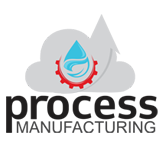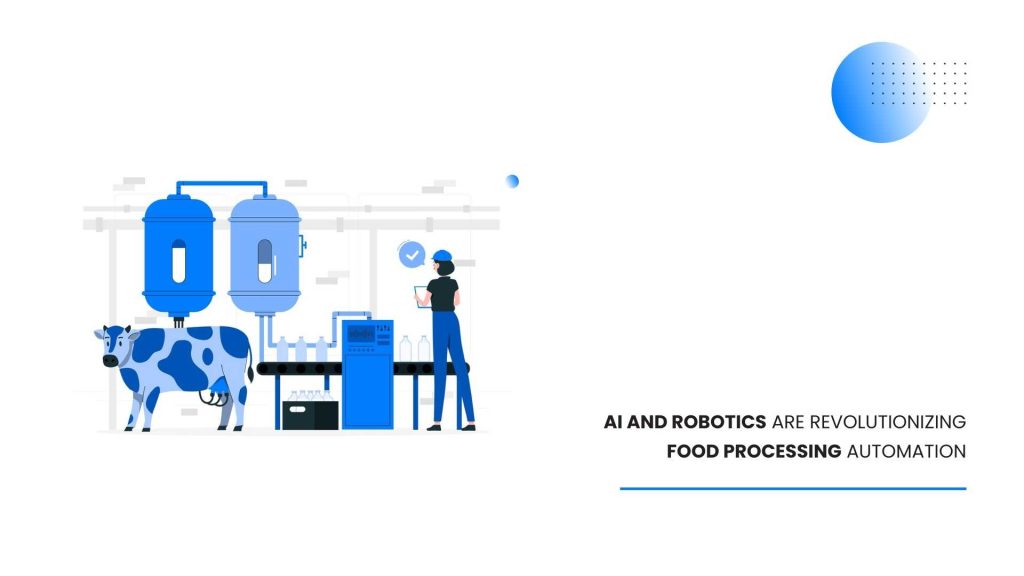Businesses are increasingly using ERP software for operations and growth. Developers are innovating ERP solutions with AI technology to enhance usability, productivity, cost reduction, and competitiveness. AI integration in ERP software aims to improve performance and user experience.
AI and Robotics are revolutionizing food processing automation:
Businesses encounter challenges like quality control issues, operational inefficiencies, labor cost increases, food safety concerns, and traceability needs. Automation in the food industry aids in tackling these issues and enhancing efficiency and productivity.
AI systems optimize production, predict demand, and enhance supply chain management. Robots automate tasks like sorting and packaging to boost productivity and cut costs.
AI Robotics in Food Manufacturing:
Automated Packaging:
AI-powered robots can efficiently handle packaging tasks in food manufacturing. These robots can identify packaging materials, fill them with the appropriate amount of food products, seal them, and label them accurately. Through machine learning algorithms, these systems can optimize packaging processes, reduce errors, and increase packaging speed and consistency.
Sorting and Inspection:
AI robotics sort and inspect food products based on various criteria such as size, shape, color, and quality. Computer vision systems integrated with robotic arms can quickly identify and sort products, ensuring only high-quality items proceed further in manufacturing. Eliminating defective products early in the production line enhances efficiency and reduces waste.
Material Handling:
AI-powered robots move raw materials and finished products throughout the manufacturing facility. These robots can navigate complex environments safely, efficiently transport materials between different stages of production, and minimize the risk of contamination. Additionally, they can adapt to changing production demands and optimize material flow for increased productivity.
Processing and Assembly:
AI robotics are employed in various food processing and assembly tasks, such as slicing, dicing, mixing, and assembling food products. Advanced robotics equipped with AI algorithms can perform these tasks precisely and consistently, improving overall production quality and reducing manual labor requirements. Moreover, AI enables robots to learn and adapt to different product specifications, enhancing flexibility in production lines.
Sanitation and Cleaning:
AI robotics are crucial in maintaining cleanliness and hygiene in food manufacturing facilities. These robots have sensors and AI algorithms to detect and eliminate contaminants, pathogens, and other hygiene risks. They can autonomously navigate production areas, identify areas requiring cleaning, and perform sanitation tasks efficiently.
Ways of Using AI in Food and Beverage Manufacturing:
Improved Quality Control:
AI systems analyze data from various stages of the manufacturing process to identify potential quality issues in real time. By observing temperature and ingredient composition, AI algorithms can detect deviations from desired quality standards and take proper steps to ensure consistent product quality.
Sustainable Practices:
AI technology helps food manufacturers optimize resource usage and minimize waste through predictive analytics and process optimization. By analyzing energy consumption, water usage, and raw material utilization data, AI systems can identify opportunities for efficiency improvements and sustainable practices, reducing environmental impact and operational costs.
Predictive Maintenance:
AI-powered predictive maintenance systems monitor equipment performance in food manufacturing facilities and predict potential failures before they occur. AI algorithms can proactively identify patterns indicative of impending equipment malfunctions and proactively schedule maintenance, minimizing unplanned downtime and maximizing production uptime.
Enhanced Food Safety:
AI technologies, such as machine learning and predictive analytics, enable early detection of food safety hazards and contamination risks. AI systems can identify potential sources of contamination and take preventive actions to mitigate risks, ensuring compliance with food safety regulations and safeguarding consumer health.
Conclusion:
Incorporating AI technology into the Acumatica Cloud ERP system empowers manufacturers and distributors to achieve unparalleled efficiency, agility, and competitiveness in their operations. Businesses can optimize processes, enhance decision-making, and adapt swiftly to evolving market demands by leveraging AI-driven insights, predictive analytics, and automation capabilities.

Vijay comes with a vast experience in ERP and enterprise solutions space with about 20 years of experience in various packaged application like Acumatica, SAP, Orion, Salesforce.com, SugarCRM and, SalesLogix.
















